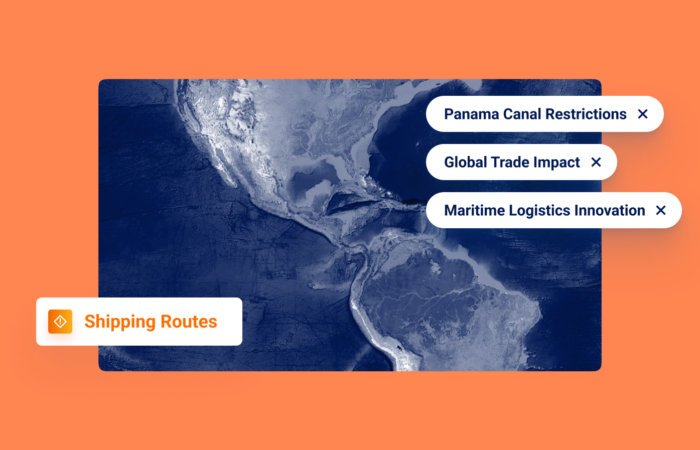What’s inside?
When the world changed in 2020, an increasing number of transactions shifted to online, raising consumer expectations for quick delivery and adding pressure to supply chains.
The economic uncertainty, Russia’s war, and other challenges have disrupted supply chains further, requiring freight forwarders (FFs), importers, exporters, and others adapt to this instability. How can they cope without losing speed?
A QUICK Definition of Supply Chain Velocity
Supply chain velocity is the speed at which supply chain actions are completed, or the pace at which orders move through the supply chain, from processing, to arrival at the customer. High supply chain velocity enables organizations to change direction quickly on short notice, by shortening order cycle time, minimizing lead times, and streamlining supply chain processes.
High supply chain velocity enables customers to receive orders with relatively little turnaround time between order placement and delivery, and allows businesses to respond quickly and accurately to changes in demand, leverage market opportunities, and efficiently manage supply chain resources. Improvements to the various stages of the supply chain can increase supply chain velocity in areas such as loading, unloading, and cargo discharge.
With the right approach, you can achieve high supply chain velocity. Let’s look at a few ways to make this work for you.
Exception Management
To keep their business operations running smoothly and maintain the integrity of the supply chain, freight forwarders, importers, exporters, and others must be able to perform container tracking for all their shipments, monitor delivery statuses, and ensure on-time arrival at the intended destinations. Trying to do this manually is a huge challenge.
Exception management automatically sends you alerts about problematic cargo, allowing you to quickly identify deviations from the plan, and analyze and resolve the issues. It enables you to quickly overcome the costly risk of disruption. Wasting time and human resources manually analyzing cargo shipments has a negative impact on an organization’s supply chain velocity.
Automated alerts reduce the time it takes to analyze shipments from hours or days, to just minutes, contributing to high supply chain velocity.
Share Freight Information
When significant events occur, such as this year’s historic drought in the Panama Canal region and the resulting limit on vessel passage, advanced container tracking assumes even greater importance than it does during business-as-usual.
It’s one thing knowing what is happening, or what could happen, but without being able to quickly and easily share information and collaborate during fluid situations, you don’t really possess agility or flexibility. Providing stakeholders with access to specific container information is critical to supply chain velocity.
Supply chain personnel should not have to manually send and manage a sea of emails while trying to communicate vital information to the container’s stakeholders in real time to avoid disruptions and improve cargo status visibility. An advanced and shareable shipment page within the transport management system enables easy sharing of a real-time view of a container, with automated tracking for both users and non-users.
This streamlines the tracking process for customers, shippers, consignees, and other key stakeholders, seamlessly creating a single source of truth, and improving supply chain velocity. Externally, customers benefit from the quickest and most effective way of understanding the full picture about individual containers and their updated ETAs, while internally, personnel can remain agile by sharing information to quickly coordinate and strategize.

Choose the Right Cargo Corridor
Another way to improve supply chain velocity is by choosing the right corridor for your cargo.
Delay factors that impact transit times include: multiple suppliers and diverse sourcing origins for the same products requiring additional port capacities; a lack of landside infrastructure, such as warehousing and trucking, causing land-side congestion of cargo at ocean terminals; and port disruptions and shut downs for long periods, creating huge backlogs and increasing average transit times that result in schedule irregularities.
An ocean freight visibility solution can offer invaluable assistance by providing machine learning-based insights to generate real-time accurate ETA predictions for entire global fleets of container vessels. It leverages valuable available data to calculate congestion levels at all container ports, and provides real-time visibility and port performance insights. Predictability arms you with the insights and flexibility that will allow you to effectively plan and avoid disruptions that impact supply chain velocity.
Access Container Tracking Info Inside Your System
Shipping and supply chain stakeholders enjoy benefitting from as many AI-based insights as possible, especially considering the complexity of the maritime ecosystem and the growing number of sanctions since Russia’s invasion. But when using a legacy system, toggling between your own UI and screens that offer actionable insights is clumsy. It takes too much time when you need to come up with quick risk assessments and decisions.
Obtaining a holistic picture on one screen, within your existing workflows, solves the pain point of endless toggling when trying to gain a complete assessment of shipments, vessels and containers, and generates fast and accurate risk assessments.
It’s possible to track your ocean container shipments, from departure to arrival, throughout the container’s journey, by integrating insights into your existing tracking systems. This will allow you to receive real-time updates on a shipment’s ETA, live location, predictive risk of delay, and location-based notifications on departures and arrivals.
Don’t Break the Chain
With the right insights, automation, and AI-based technology, organizations will be able to achieve high supply chain velocity and continue to adapt, compete, and succeed in the constantly changing and challenging ocean freight environment, while delivering value to their customers.






